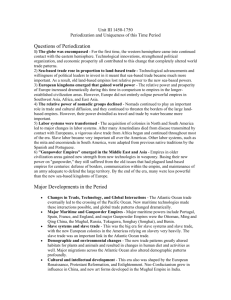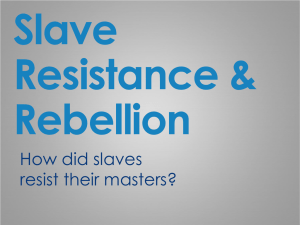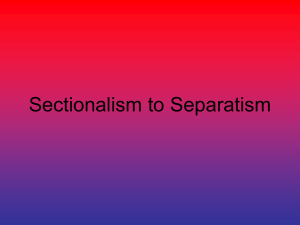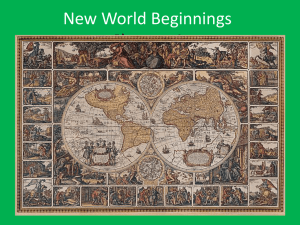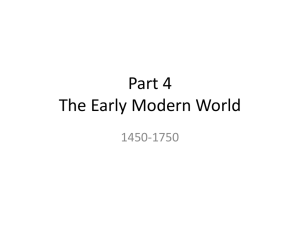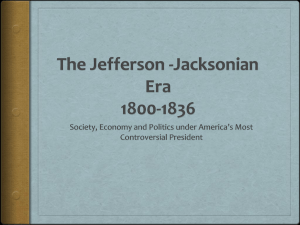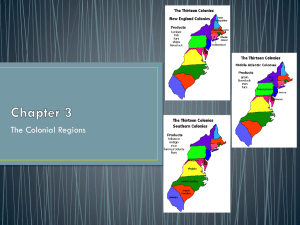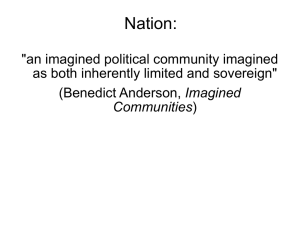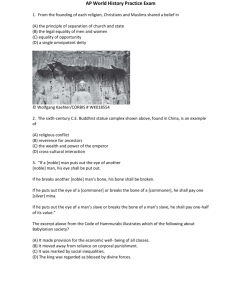Labor Systems
advertisement
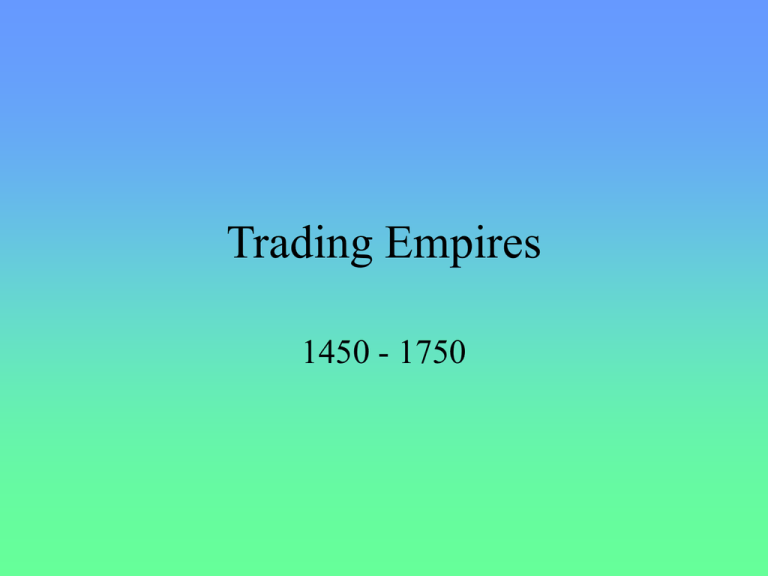
Trading Empires 1450 - 1750 Empires: Dutch • Dutch East India Company – “universal carriers” In 1660, employed 12,000 people and had 257 ships. Sought monopolies and large profits. • North America (fur trade along the Hudson river, New Amsterdam) • Caribbean islands for plantation settlements • Cape Town South Africa – way station • Southeast Asia – spice trade (nutmeg in Banda islands, cloves in Melaka and pepper in Banten) Empires: Spain • Columbus’ voyage • Arrival of Cortez in Mexico and Pizarro in Peru • Took over existing tributary empires: labor (mita), silver, gold, and foodstuffs • Demographic impact: disease, death, and mestizos Spain Empires: Portugal • Search for Maritime route to Asia • Advanced naval technology: caravels, carracks, astrolabe and compass • Established fortresses along the Gold Coast – sugar plantations and African slave labor • Indian Ocean trade and Da Gama: Malindi, Sofala and Kilwa, Calicut and Goa, and later Macao • Atlantic trade with conquest of Brazil – sugar plantation Brazil: Plantation colony • Portuguese due to Treaty of Tordesillas 1494 • African slave labor used to support the plantation complex (sugar) • Largest producer of sugar in world first half of 17th C. Empires: African • Characteristics of: • Stateless societies - organized around kinship • Forms of government – Kongo (Congo) – Diving Right – Songhay (Niger/Mali) – Emperor of conquered territories (no local rule) – Oyo & Benin (Nigeria) – Independent city-states – Ashanti (Ghana/Ivory Coast) – Union of states. Gold-trading and transitioned to slave-trading • Some large centralized states – increased unity came from linguistic base – Bantu, Christianity and Islam, as well as indigenous beliefs • Trade – markets, international commerce, taxed trade of unprocessed goods. Gender and Empire • How might colonial conquests influence gender roles? Demographic and Environmental Changes • Predict what the consequences of increased integration and empire building be on population? On the environment? Think long and short term. Land Based Empire vs. Sea Based Empires Ben Needle Kell High School Marietta, GA Ben.needle@cobbk12.org Land Based • • • • • Self-defense extremely important Examples? Ottoman, Russian, Mughal, Ming Relatively Large Expensive – Focused on agriculture and not industry • Many were located in arid & uninhabitable area • Involved in forced labor – no longer in WE • Power was centralized • Between 1500 and 1800 had the largest administrative and economic systems because they were more of a threat to each other Sea Based • • • • • Few strategic concerns Examples? Spain, Portugal, England Relatively Small Self-sufficient • Settled in profitable areas • Involved in forced labor – Increasingly brutal • Power “divided” amongst lands • Benefited from private investors or joint-stock companies Labor Systems 1450 – 1750 Types of Labor • What are the two main types of labor systems? • Paid and Unpaid • When were paid systems used? • Indentured servants/Debt Peonage • Who were these indentured servants? • Europeans who came over during the first wave of imperialism. • Debt Peonage (enforced servitude) • Debtor provides service until their debt is paid off • Basis of tenant farming and sharecropping in post-Civil War south. • Kept former slaves tied to land • Common in 19th and 20th Century Latin America • What was the second labor force of imperialism? • Indigenous people Indigenous Labor in the New World • What were encomiendas and the mita system? • Land granted to Spanish Conquistadors in Latin America – This land included the Indian Laborers living there • Forced labor system replacing indentured servants with Indian slaves – Based off of the Incan labor system • What were Potosi and Huancavelica? • Largest silver mine and source of mercury • What was the similarity between Viceroyalities and Capitancies? • V = Spanish representative of the king • C = Portuguese representatives of the king (Brazil) • Why were Europeans “forced” to turn slave labor in the New World? • Indigenous people were dying and the emergence of plantations demanded far more labor The Emergence of Slave Labor • Why was there little need for slave labor in the Northern American colonies? • Crops requiring large numbers of laborers were grown in the south • What crops require large amounts of labor? • Rice, tobacco, sugarcane, cotton • As the New World colonies increasingly turned to plantation crops, the need for slave labor skyrocketed The Slave Trade • Involved approximately 20 million Africans (survived) • Triangular Trade – West Coast of Africa Caribbean/Latin America/ North America Europe • 13 – 20% died during the trip • 1) 2) 3) • 1) 2) • • • Reasons for British Institutionalization of slavery Need for cheap, abundant labor Viewed Africans as less human Natives and European indentured servants worked for only a specific amount of time Other reasons slavery was so successful Seemingly limitless supply Natural increase allowed for population maintenance 1660s(VA) – 300 1756 – 120,000 Thousands were brought in daily at one point Effects of the Slave Trade 1. Areas of Africa depopulated • Took youngest and healthiest 2. Social organization disrupted 3. Local culture suffered (arts and trade) • Dependent on European goods 4. African empires lost prominence as power/trade shifted to the coast 5. Desire for wealth/guns perpetuated the slave trade 6. View of Africans as an inferior race led to poor race relations today Questions to Consider • What effects would the slave trade have upon Africa in the future? • What effects did the slave trade have upon the New World?
